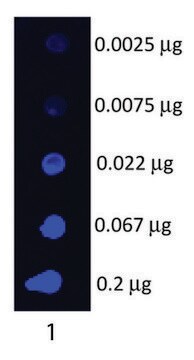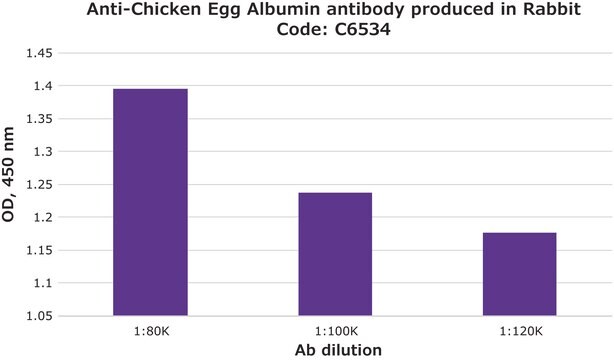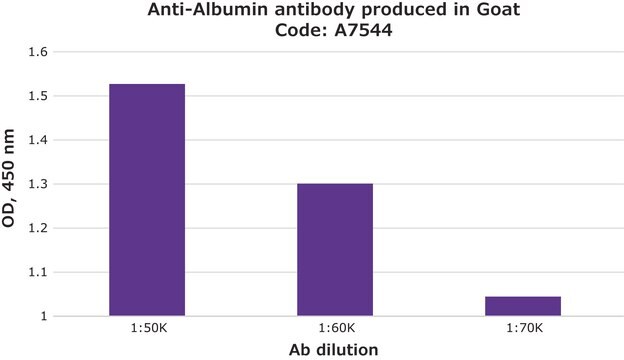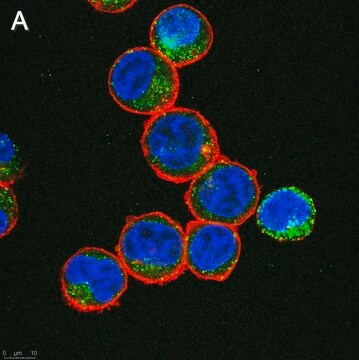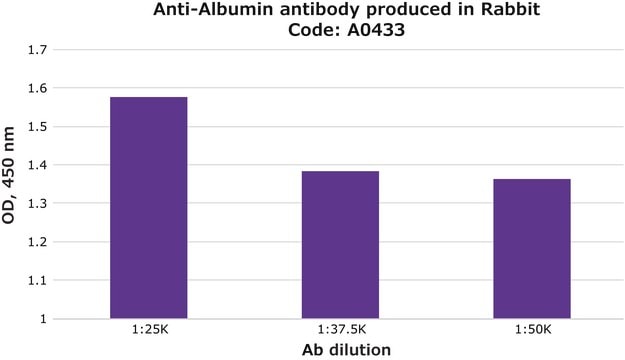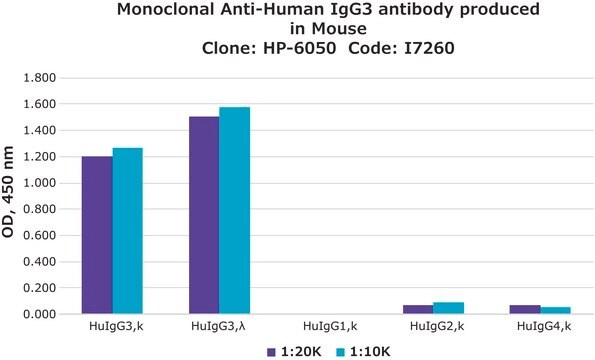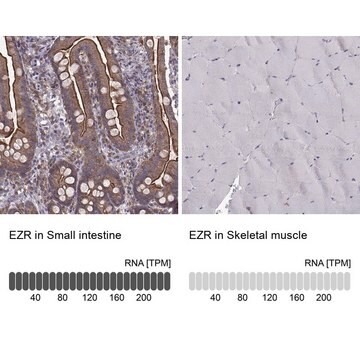SAB4200867
Anti-PMEL antibody produced in rabbit
affinity isolated antibody, buffered aqueous solution
同義詞:
ME20-M (ME20M) Melanoma-associated ME20 antigen, Melanocyte protein, Melanocyte protein Pmel 17, Melanocytes lineage-specific antigen GP100, Melanoma gp100, P1, P100, Premelanosome protein, Silver locus protein homolog
登入查看組織和合約定價
全部照片(3)
About This Item
分類程式碼代碼:
12352203
NACRES:
NA.43
物種活性:
human
application:
技術:
immunoblotting: 1:1000-1:2000 using human melanoma SK-MEL-28 cell lysate
citations:
6
推薦產品
一般說明
The melanocyte-specific protein PMEL (also known as Pmel17, gp100, melanocyte protein, premelanosome protein or silver locus protein homolog (SILV)) is a type I transmembrane glycoprotein that is expressed primarily in pigment cells of the skin and eye. In melanosomes, the protein forms a fibrillar matrix on which the UV-shielding pigment melanin is deposited.1-2
特異性
Anti-PMEL antibody specifically recognizes human PMEL protein.
應用
The antibody may be used in various immunochemical techniques including Immunoblotting (~100 kDa), Immunohistochemistry and Immunofluorescence.
Detection of the PMEL band by Immunoblotting is specifically inhibited by the immunogen.
Detection of the PMEL band by Immunoblotting is specifically inhibited by the immunogen.
生化/生理作用
PMEL fibrils are a major functional component of the melanosomal compartment as they optimize melanin polymerization, condensation and storage.1,3
PMEL fibrils have an amyloidogenic nature and share features with pathological amyloids.4 Mutations in PMEL are associated with pigmentation disorders and/or impairments in eye development in various species.1,5,6
PMEL is suggested an excellent model system to study mechanisms of intracellular amyloid formation.1
PMEL fibrils have an amyloidogenic nature and share features with pathological amyloids.4 Mutations in PMEL are associated with pigmentation disorders and/or impairments in eye development in various species.1,5,6
PMEL is suggested an excellent model system to study mechanisms of intracellular amyloid formation.1
外觀
Supplied as a solution in 0.01 M phosphate buffered saline pH 7.4, containing 15 mM sodium azide as a preservative.
儲存和穩定性
For continuous use, store at 2-8°C for up to one month. For extended storage, freeze in working aliquots. Repeated freezing and thawing is not recommended. If slight turbidity occurs upon prolonged storage, clarify the solution by centrifugation before use. Working dilution samples should be discarded if not used within 12 hours.
免責聲明
Unless otherwise stated in our catalog our products are intended for research use only and are not to be used for any other purpose, which includes but is not limited to, unauthorized commercial uses, in vitro diagnostic uses, ex vivo or in vivo therapeutic uses or any type of consumption or application to humans or animals.
儲存類別代碼
12 - Non Combustible Liquids
水污染物質分類(WGK)
WGK 1
閃點(°F)
Not applicable
閃點(°C)
Not applicable
Christin Bissig et al.
International journal of molecular sciences, 17(9) (2016-09-03)
In pigment cells, melanin synthesis takes place in specialized organelles, called melanosomes. The biogenesis and maturation of melanosomes is initiated by an unpigmented step that takes place prior to the initiation of melanin synthesis and leads to the formation of
Thomas Burgoyne et al.
Journal of cell science, 128(7), 1400-1407 (2015-02-19)
Analysis of melanosome biogenesis in the retinal pigment epithelium (RPE) is challenging because it occurs predominantly in a short embryonic time window. Here, we show that the zebrafish provides an ideal model system for studying this process because in the
Douglas M Fowler et al.
PLoS biology, 4(1), e6-e6 (2005-11-23)
Amyloid is a generally insoluble, fibrous cross-beta sheet protein aggregate. The process of amyloidogenesis is associated with a variety of neurodegenerative diseases including Alzheimer, Parkinson, and Huntington disease. We report the discovery of an unprecedented functional mammalian amyloid structure generated
Jia Shee Hee et al.
Scientific reports, 7, 44064-44064 (2017-03-09)
PMEL is a pigment cell protein that forms physiological amyloid in melanosomes. Many amyloids and/or their oligomeric precursors are toxic, causing or contributing to severe, incurable diseases including Alzheimer's and prion diseases. Striking similarities in intracellular formation pathways between PMEL
我們的科學家團隊在所有研究領域都有豐富的經驗,包括生命科學、材料科學、化學合成、色譜、分析等.
聯絡技術服務